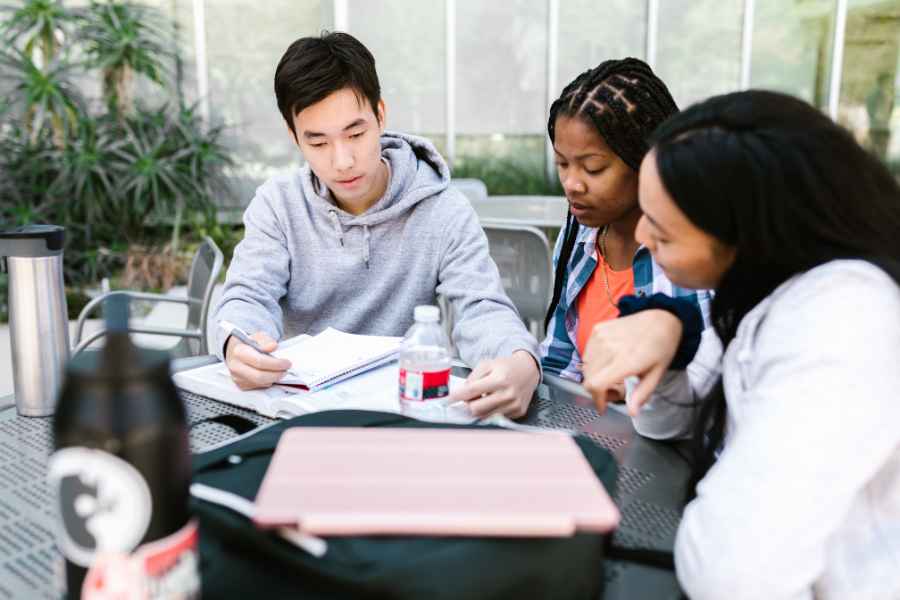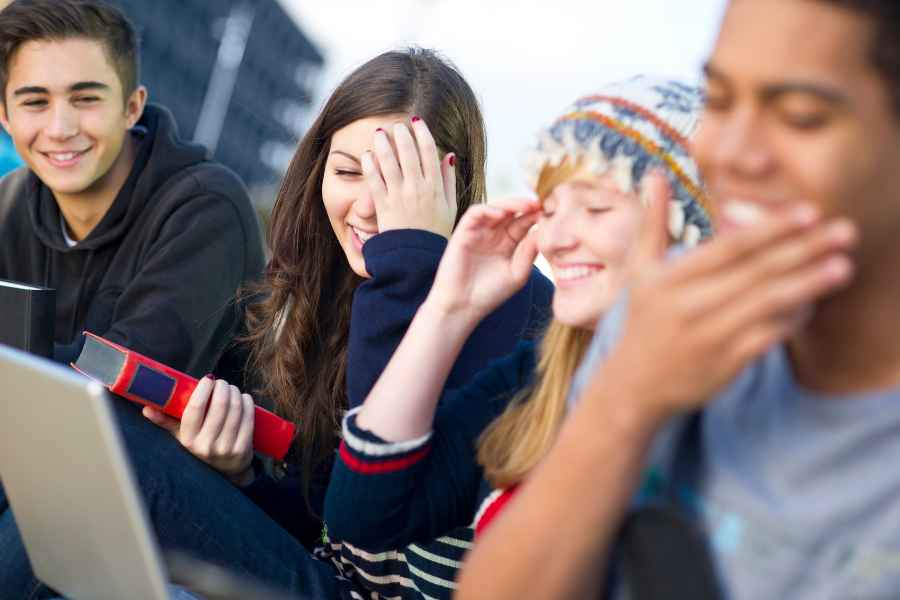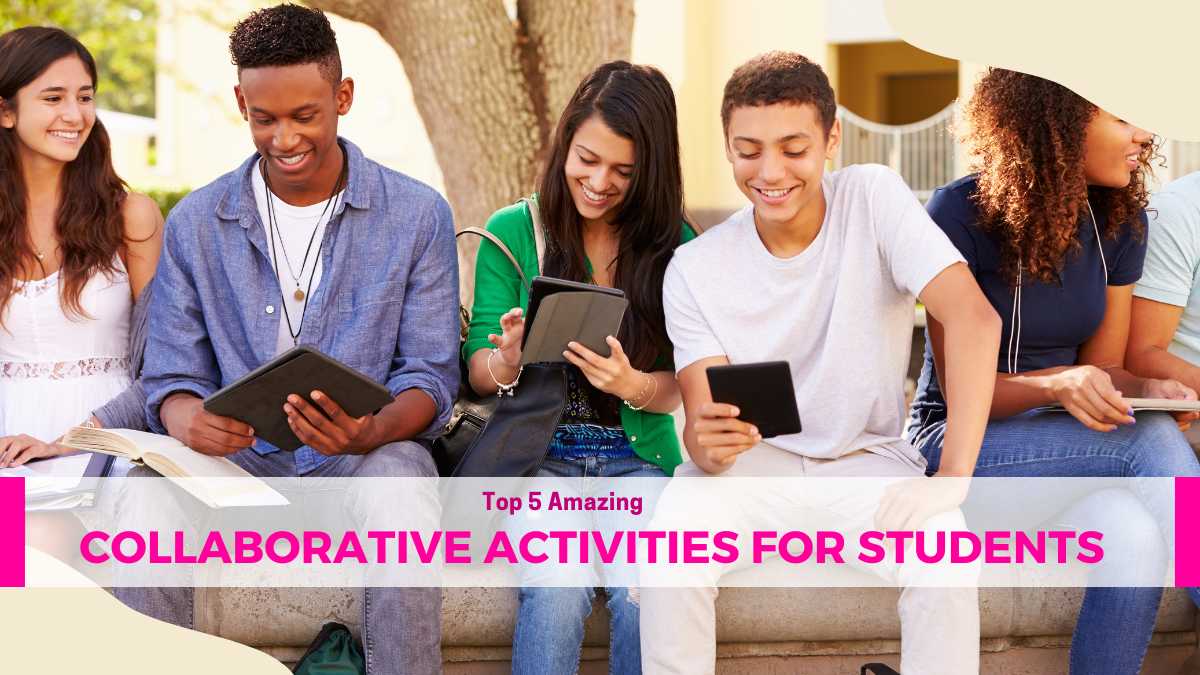Collaborative Activities for Students are an essential part of any educational experience. They provide students with the opportunity to work together to solve problems, build relationships, and develop critical thinking skills.
By engaging in collaborative activities, students can learn to think critically, communicate effectively, and work together to achieve a common goal. Collaborative activities can also help to foster a sense of community and build relationships between students.
This article is about the brief introduction of collaborative activities, its types and a discussion about the different strategies for organizing and monitoring successful Collaborative Activities for Students.
After discussing multiple strategies a conclusion is driven at the end that summarizes the importance and positive outcomes of collaborative activities.
Table of Contents
What Are Collaborative Activities?

Collaborative activities are an effective way to engage students in learning. They provide opportunities for students to work together, develop problem-solving skills, and build relationships with their peers. Collaboration can help foster a sense of community among classmates while also helping them learn new concepts more effectively than they could on their own.
Collaborative activities involve learners working together in pairs or groups to accomplish a task. Examples include:
- Pair or group discussions.
- Completing shared tasks in a pair or group, i.e. matching, sorting, or ranking.
- Activities or games that have a competitive aspect, such as bingo.
- Drama and role play exercises.
- Information exchange activities like barrier games or jigsaw activities.
Benefits of Organizing Collaborative Activities for Students

Collaborative activities provide a number of benefits for students, both in terms of their academic and social development. By working together on projects or tasks, students can gain valuable problem-solving skills that will help them succeed not only in school but also later on in life. These activities encourage collaboration among classmates which helps to foster positive relationships and build trust between peers.
This collaborative learning encourages critical thinking as well as creativity by letting students explore different perspectives while brainstorming solutions to problems they may encounter during the activity.
Working together highlights student’s unique strengths and weaknesses. In addition, these types of Collaborative Activities for Students are often more engaging for them than traditional classroom instruction. Moreover, these activities give all students an opportunity to participate actively rather than just listening passively from behind a desk.
Types of Collaborative Activities
Collaborative activities come in many different forms and can be used to teach a variety of topics. These activities range from simple group tasks such as solving puzzles or creating art projects, to more complex problem-solving challenges like designing an experiment or building a model. Some popular types of collaborative activities include:
Brainstorming:
Working together to generate ideas on how to solve problems or complete tasks.
Role Playing:
Assigning roles for each student so that they must work together in order to achieve the desired outcome.
Debate/Discussion Groups:
Allowing students the opportunity to share their opinions on various topics while learning how best to articulate their views respectfully with others who may have differing perspectives.
Problem Solving Games/Activities:
Engaging students in fun yet challenging games where they must use critical thinking skills and collaboration techniques in order to succeed.
Team Building Exercises:
Encouraging teamwork among classmates by having them participate in physical exercises that require cooperation and communication between all participants involved
6 Helping Ways to Arrange Collaborative Activities in the Classroom
Here we enlist six more effective Strategies that can help you to engage your students passionately in Collaborative Activities. Plus, their active participation will drive fruitful results for all your efforts.
1. Planning and Preparing for a Successful Activity
To plan collaborative activities for Students, it is important to consider the goals of the activity as well as the students’ abilities. Teachers should think about how much time they have available and decide on an appropriate duration for each task or project.
It is also essential to establish clear expectations regarding participation in order to ensure that all students are contributing equally throughout the process. The teachers need to make sure that there are enough materials available. So everyone can participate without having to wait their turn or share supplies with others.
Moreover, providing a detailed overview of what will be expected during each step of the activity will help keep everyone on track. Also allow them to focus more effectively on completing their tasks successfully.
2. Setting Up the Space for Maximum Engagement
When setting up a space for collaborative activities for Students. Teachers should have to create an environment that encourages engagement and collaboration among them. It can be done in a way that lets all students interact easily with one another.
Students also have enough room to move around freely and participate actively. It’s also helpful to provide visual cues like posters or diagrams on the walls. Which can demonstrate the passion among participants to reach their goals throughout the activity.
Additionally, it’s necessary to ensure that there are enough resources available so each student has what they need without having to wait for others. Teachers must describe clear rules and expectations before getting started in any group work. It will get maximum participation from all students and will also minimize distractions during performing the tasks.
3. Establishing Rules and Guidelines for Participation
To set up rules and guidelines for collaborative activities for Students, will help students understand their roles in the game. Teachers should clearly outline expectations regarding participation, behavior, and respect towards others’ ideas during group work.
They can assign specific tasks or responsibilities to each student. So everyone will have clarity of what they are expected to contribute throughout the activity. It is also helpful to provide incentives such as rewards or recognition.
When goals are met.
It will motivate participants while encouraging them to stay focused on their task at hand. Apart from this, instructing them about consequences of not following the rules. Ensure their accountability to perform assigned tasks during group projects or activities.
4. Monitoring Student Progress During an Activity
During the arrangement of collaborative activities, it is important for teachers to monitor student progress throughout the activity. It will ensure that everyone is staying on task and participating equally. This is done by monitoring the Students in Classroom.
How students are interacting with each other as well as their level of engagement in the project or task at hand.
Teachers should provide feedback when necessary so that all participants know what they need to do differently or better. It may also be helpful for teachers to assign roles within groups so that there is someone taking charge. Who can help guide their peers towards a successful outcome.
Collaborative Activities for Students, provide ongoing support and guidance during group work. It will also help foster positive relationships between classmates while also helping them stay focused on completing their tasks effectively.
5. Assessing Learning Outcomes from Group Work
When assessing the learning outcomes of collaborative activities for Students, it is important to consider both individual and group performance. Teachers should evaluate each student’s contribution to the task at hand as well as their ability to work effectively with others in order to achieve a successful outcome.
They can assess how well students are able to communicate their ideas during group discussions or debates. This will help determine whether they are able to articulate their thoughts clearly while also considering different perspectives on any given topic.
Furthermore, providing feedback regarding areas where improvement may be needed. It will help ensure that all participants understand
What needs to be done differently in order to succeed next time around.
Finally, evaluating the overall success of an activity by looking at its completion rate and quality of output can provide valuable insights. That which strategies are working best for engaging students in meaningful collaboration efforts.
6. Strategies to Overcome Challenges in Group Work
Group work can be challenging for both teachers and students, as it often requires a great deal of coordination, communication, and collaboration. However, there are several strategies that can help ensure the success of collaborative activities for Students in the classroom setting. First, providing clear expectations regarding participation will help keep everyone on track while also encouraging equal contribution from all participants involved.
Additionally, assigning roles within groups or teams will give each student an opportunity to take charge, Which may also foster leadership skills among classmates. It is also important to provide ongoing support throughout group projects or tasks. This could include offering feedback when necessary as well as providing guidance if any issues arise during the activity.
Finally, allowing some flexibility in tasks may encourage creativity and problem solving among students. While helping them stay engaged throughout their project or task at hand.
Final Thoughts
Collaborative activities for Students offer numerous benefits for students by engaging them in meaningful learning experiences that require critical thinking skills and teamwork amongst peers. These types of activities provide opportunities for building relationships between classmates while fostering positive social development through cooperation and communication between participants involved.
When planning the projects or tasks it is essential to consider time duration as well. So that everyone has an equal chance at succeeding during group work sessions without feeling overwhelmed by too much material.
Additionally , establishing rules , guidelines ,and expectations before beginning any activity helps ensure maximum engagement from all parties involved . Lastly, monitoring progress along with assessing learning outcomes provides valuable insight. What worked best during each step of the process which can then be used towards improving future collaborative efforts.

